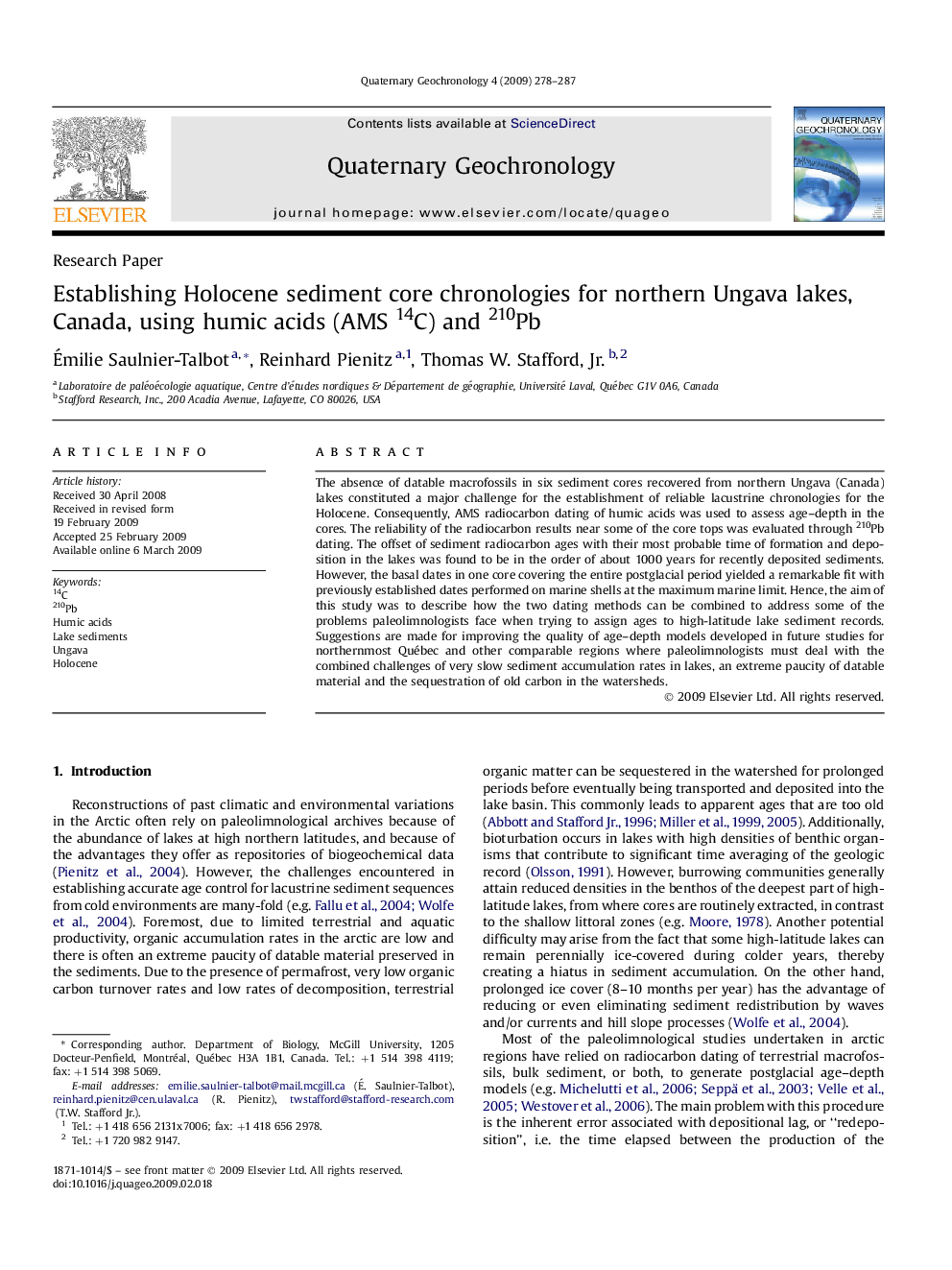| کد مقاله | کد نشریه | سال انتشار | مقاله انگلیسی | نسخه تمام متن |
|---|---|---|---|---|
| 4725224 | 1355970 | 2009 | 10 صفحه PDF | دانلود رایگان |

The absence of datable macrofossils in six sediment cores recovered from northern Ungava (Canada) lakes constituted a major challenge for the establishment of reliable lacustrine chronologies for the Holocene. Consequently, AMS radiocarbon dating of humic acids was used to assess age–depth in the cores. The reliability of the radiocarbon results near some of the core tops was evaluated through 210Pb dating. The offset of sediment radiocarbon ages with their most probable time of formation and deposition in the lakes was found to be in the order of about 1000 years for recently deposited sediments. However, the basal dates in one core covering the entire postglacial period yielded a remarkable fit with previously established dates performed on marine shells at the maximum marine limit. Hence, the aim of this study was to describe how the two dating methods can be combined to address some of the problems paleolimnologists face when trying to assign ages to high-latitude lake sediment records. Suggestions are made for improving the quality of age–depth models developed in future studies for northernmost Québec and other comparable regions where paleolimnologists must deal with the combined challenges of very slow sediment accumulation rates in lakes, an extreme paucity of datable material and the sequestration of old carbon in the watersheds.
Journal: Quaternary Geochronology - Volume 4, Issue 4, August 2009, Pages 278–287